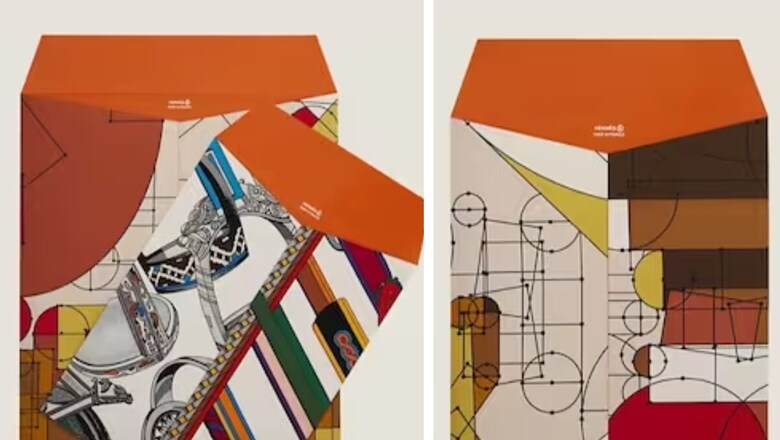
views
The realm of luxury brands often sparks curiosity, fascination, and at times, incredulity regarding their extravagant pricing. Hermès, renowned for its opulent offerings, recently made waves with an unexpected addition to its repertoire – a single paper envelope carrying a remarkable price tag of $125 (approximately Rs 10,400). This astonishing pricing has raised eyebrows and prompted discussions on social media platforms, questioning the rationale behind such a seemingly exorbitant cost for an everyday item.
While paper envelopes are conventionally considered common and readily available at nominal prices, Hermès’ distinguished offering presents a departure from this norm. Described on the Hermès website as the “signature orange Hermès paper envelope,” this luxury item is encased in silk and housed within an elegant orange paper box, exuding opulence even in its packaging. Available in two sizes, A4 and A5, the envelope is marketed as ideal for safeguarding travel documents, tickets, or personal notes, doubling as a cherished keepsake for special occasions such as invitations or declarations of affection.
Despite the brand’s attempts to position the envelope as a luxurious and functional accessory, social media users expressed incredulity, questioning the justification behind its exorbitant pricing. A viral TikTok video humourously mocked Hermès’ pricing strategy, where alongside the envelope, attention was drawn to other extravagant items like a paperweight retailing at an astounding $2,950 and a mouse pad commanding a staggering price of $405.
Comedian Benton McClintock’s lighthearted commentary on TikTok highlighted the sheer incredibility of these prices, playfully wondering about the necessity of a $1,350 mushroom-shaped paperweight for keeping papers in place. “How are you keeping your papers from flying away without a Hermès mushroom paperweight?” he said.
The online community’s reaction underscores a prevailing sentiment regarding the perceived disconnect between luxury pricing and the intrinsic value of everyday items. Critiques aimed at luxury brands’ pricing strategies are not uncommon. Notably, Balenciaga faced similar scrutiny last year for marketing trash bags at an exorbitant price of Rs 1.4 lakh each, generating considerable astonishment and criticism.
The stark contrast between these luxury brand offerings and the accessibility of similar mundane items in the market sparks discourse about exclusivity, brand value, and the psychology behind luxury purchases. While luxury brands often command premium prices for their craftsmanship and brand prestige, the boundary between luxury and extravagance can sometimes blur, leading to debates about the true value proposition of such items in the eyes of consumers.



















Comments
0 comment